Vincent ‘Mad Dog’ Coll – The Gangster from Gweedore
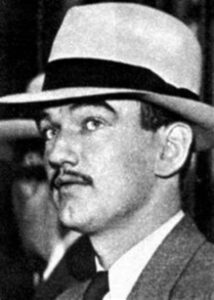
By John Joe McGinley
One of the most notorious Irish gangsters of the prohibition era was Vincent ‘Mad Dog’ Coll. A handsome and intelligent man, he was also a cold-hearted killer who some believed was psychotic and in
his short life he left a legacy of gang land killings, kidnapping and the murder of a five year old child. This is his story.
Vincent Coll was born on July 20th , 1908 in the Irish-speaking parish of Gweedore which, at the time, was an impoverished region of County Donegal. Gweedore was rich in beauty but lacking in opportunities and employment and its biggest industry in 1908 was emigration.
When Vincent was less than a year old, his parents decided to do what many Irish people did in those days, they emigrated to America to seek a better life. With their seven children, the Colls settled in the Irish enclave of the Bronx but found that their lives in New York were not much better than the one that they had left behind in Gweedore.
Vincent Coll was born in Gweedore Donegal but his parents left for New York when he was only one year old.
They still lived in dire poverty, leading Coll’s father to eventually desert the family. Coll’s mother and all but one of his six siblings died before he turned 12 years old. After his mother died, Coll and his brother Peter were placed in a number of Catholic orphanages but were found to be uncontrollable by the clergy who ran these institutions.
Eventually the Coll brothers were sent to live with an aunt named Mary Friel another native of Gweedore, in New York’s Hell’s Kitchen, in those days a largely Irish neighbourhood.
If the authorities thought that living with a close relative would turn the boys into law-abiding citizens, they were sorely mistaken. The brothers used the Friel home as a base from which they organised a juvenile street gang made up mainly of Italian youths who had dreams of becoming Mafiosi, like the leading Italian gangsters who were beginning to make a name for themselves in New York City.
Vincent was a difficult child, constantly in trouble and he was expelled from several local Catholic schools before he even reached his teens. On the streets he had swapped formal education for another form of learning — the art of crime, with a local gang called the Gophers, led by Owen ‘Owney’ Madden. (1)
Turning to Crime
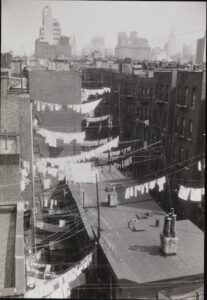
While school books had been no attraction, Coll was a fast learner in the art of crime and he soon came to the attention of the established gangster, Arthur Flegenheimer, better known as ‘Dutch Schultz.’
Shultz was a Jewish-American mob leader who had amassed power and wealth through ‘bootlegging’ (producing and selling illegal alcohol) and the ‘numbers’ or illegal gambling, racket.
While criminal gangs grew rich controlling gambling, prostitution and protection rackets, the catalyst for the growth of organised crime in the US was the exploitation of the Prohibition of Alcohol. On October 28th , 1919, the US Congress passed the Volstead Act, the popular name for the National Prohibition Act.
This established the legal definition of intoxicating liquors as well as penalties for producing them. Although the Volstead Act prohibited the sale of alcohol, the federal government lacked resources to enforce It and criminal gangs began to meet the continuing demand for liqueur, amassing massive profits and influence in the process.
As Coll was coming of age, Prohibition made organised crime big business in America’s great cities. Coll made his name as a killer for hire.
In the violent poverty-stricken era of 1920s New York, Coll was not afraid to do whatever it took to rise to the top of the gangster tree. His aggressive and volatile personality made him a man to be feared and his willingness to murder to get what he wanted made him a trusted lieutenant of Schultz. He soon became one of the Prohibition era’s most feared enforcers. He had no qualms about using violence and was a ruthless killer.
As the body count rose, the authorities started to take a keen interest in Coll.
In 1927, at just 19, Vincent Coll was accused of the murder of a ‘speakeasy’ (illegal tavern) owner who had refused to sell bootleg alcohol for Dutch Schultz.
Coll was found not guilty and acquitted, which was no surprise as Schultz used his influence to tamper with the jury; it was a matter of ‘find Coll innocent or else’. Vincent walked free and the jury avoided harm. (2)
Clearly guilty, Vincent showed no remorse; in fact, he now felt invincible and was soon out of control. He believed that money and intimidation made gangsters like him untouchable.
Seeking money to fund his increasingly extravagant lifestyle, Coll began operating on his own and robbed the Sheffield Farms dairy in the Bronx of $17,000 without Schultz’s authorisation or permission.
Vincent goes to war with Dutch Shultz
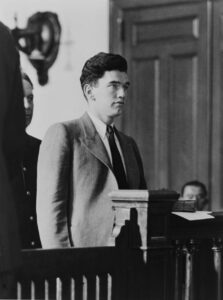
When the two men next met, Schultz reminded Coll he could only operate with his approval.
Coll told Schultz that it was his methods that had helped build his empire and rather than apologise, he demanded to be made his partner. Shultz refused and a rift developed between the men who had once been close friends.
While Coll was a violent man, Shultz was on a different level of viciousness and not a man to be crossed. Vincent had made a strategic error, and a paranoid and ruthless enemy.
Coll was now a marked and isolated figure and the final break with Schultz came in January 1931. Vincent was arrested and despite their animosity, Schultz put up the bail money. This was a surprising but clever move. Shultz did not want Vincent giving the authorities any information on his activities and despite his loathing for Coll he’d rather pay up than have him behind bars.
Coll fell out with his one-time mentor and boss ‘Dutch Schultz’ over unpaid debts and Coll’s independent streak.
Vincent did not attend his trial which meant the bail money was forfeited. Shultz demanded Coll pay him back, but Vincent refused. This was the final breakdown in an already fractious relationship and the two men went to war.
Coll left the Shultz operation and proceeded to take a dozen members of the Schultz gang to join him in this new criminal enterprise. Coll’s new gang and Schultz’s mob engaged in a bloody battle. (3)
To finance his war against Shultz, Coll’s gang began to kidnap rival gangsters and hold them for ransom. This was a side-line Coll found highly lucrative and he was particularly good at it. As the war dragged on Shultz was terrified by the savagery of Coll’s attack on his organisation. He felt Coll was reckless and his destructive nature was bad for business.
Coll developed a lucrative if risky business in kidnapping and ransoming major criminals.
Coll was determined to drive Shultz out of New York. He began by hijacking Schultz’s beer trucks and would then sell the beer at discounted rates to bar owners. He then burned down a warehouse belonging to Shultz, destroying a vast quantity of bootleg beer.
Coll cranked up the violence and he and his gang assassinated several of Shultz’s closest associates and even tried unsuccessfully to murder Schultz. Vincent had to be stopped and Dutch Shultz retaliated in May 1931 when he arranged for the murder of Vincent’s brother Peter his right hand man and a fearsome gangster in his own right.
Coll’s tactics so terrified Schultz that he also offered a large sum of money to several policemen to murder Coll. Such was Vincent’s reputation that they turned down the offer.
Distraught at the murder of his brother Peter, Coll responded with a maelstrom of violence in the following three weeks he personally murdered four of Schultz’s men. Despite the rising body count, the war was a stalemate and finally petered out into an uneasy truce, but both men would not forget or forgive. It was peace, but only for now. (4)
Vincent expands his territory
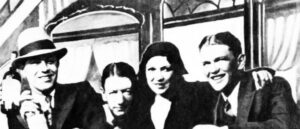
Despite the stalemate, Vincent Coll did manage to bully his way into the control of some sections of Harlem and the Bronx that were previously controlled by Shultz.
He soon owned a number of bars, not by purchasing them but by telling the previous owners they would be killed if they did not leave New York. Given Vincent’s reputation and track record, most left. Vincent was fast becoming a major player in the New York criminal landscape.
However, he was also becoming an inconvenience for the New York criminal fraternity. Violence was part of everyday life but only if it was good for business and, for many, Vincent was bad for profits.
Coll also had no friends in the underworld due to his ongoing lucrative side-line of kidnapping other gangsters and holding them for ransom.
Whilst undoubtedly violent and volatile, Coll was no fool. He knew his victims would not report their kidnappings because of the underworld’s code of silence. Also, any freed gangster would have a hard time explaining to the police authorities or the tax man where the ransom money that they paid had come from.
However, it wasn’t just gangsters he kidnapped; Vincent and his gang began to diversify and started to kidnap showbusiness stars and successful businessmen.
They began with showbusiness legend, Rudy Vallée, and he received $100,000 for the singer’s release. Next to be taken was Sherman Billingsly, owner of the Stork Club, the most famous restaurant in New York, whose family paid Coll $25,000 for his release. Then Billy Warren, a New York banker, parted with $83,000 to gain his freedom.
Liberal bribery kept the police from investigating Coll’s affairs too closely.
Despite broadening his kidnap victims from gangsters to legitimate businessmen, as Coll and his gang spread bribery money around liberally, the police did not interfere with his kidnapping operation.
Coll then had the nerve to kidnap George De Mange, a close aide to Irish mob boss and his old friend Owney Madden and forced Madden to pay $38,500 for his release. This was a grave insult to his fellow Irish mobster and one he would eventually avenge. (5)
There were many other kidnappings that received no publicity, but all of them added to the growing wealth of Coll, who was making more money from this activity than he made in his war with Shultz.
But this enterprise was not generating any publicity for the gang in the newspapers. Coll was a vain man who craved the notoriety of Owney Madden and Dutch Shultz. He was frustrated that his terror tactics were not making him a superstar in the New York night clubs.
What Vincent failed to realise was that his fellow mobsters would pay journalists to promote them in a positive light. Coll’s criminal activities, whilst newsworthy, didn’t generate any feelings of respect or adulation.
This is not to say that Vincent didn’t try to develop his image as a gangster; he was intelligent and handsome and spent a fortune on suits and hats.
However, he and his gang were so feared for their brutality that no matter how well they dressed, everyone thought of them as common criminals. When he visited the famous clubs of New York he desperately wanted the kind of respect that Owney Madden received, or that given to leading mafia mobsters like Lucky Luciano.
However, it was obvious to him that the club owners reacted with fear, not respect. He knew they saw him as a vicious young thug who was extremely dangerous or who might even kidnap them.
Vincent shunned by his fellow Irish
Above all, Coll wanted respect from his fellow Irishmen, but this was not forthcoming. He was once deeply humiliated at an Irish fundraiser in Brooklyn.
A dance had been organised by fellow Donegal immigrants for a Gweedore family who had lost everything in a recent fire.
Vincent went along with his girlfriend and future fiancée, Lottie Kreisberger. They entered the dance hall in designer clothes, looking every inch the successful couple. And they wanted everyone to know about it.
Despite his relative wealth and fame Coll craved the approval of his fellow Irish immigrants and was hurt by their rejection of him as a violent criminal.
Vincent had lost touch with many other Donegal immigrants as his criminal career took off and this was the first time many of them had seen this infamous gangster. They didn’t hold him in awe but in fear. Vincent may have thought he was a celebrity but to these Irish men and women trying to make a living in America, he was nothing but a violent and notorious killer. (6)
Vincent was taken aback by their reaction to him, no one approached him to give him a friendly greeting and everyone he talked to was aloof and did not hide their fear and distrust. It was plain Vincent was not welcome, even amongst his own people.
There were several of Coll’s second cousins present and they were so embarrassed by his presence that they left the venue without identifying themselves.
Vincent was shocked and hurt. He had seen how the Irish respected Owney Madden and his gang and for the first time it was clear to him that he was not respected in the Irish community in New York.
Despite all his wealth, designer clothes and beautiful girlfriend, it was clear that his fellow Donegal immigrants despised him. The Gweedore immigrants had left Ireland to escape poverty, they had journeyed across the Atlantic to America to try and find a better life for them and their children. Through hard work, many of them were already sending their children to college and some had bought their own homes. They wanted to make America their home and believed that law and order was essential for them to do so.
The brutal lifestyle of Coll and his gang was, to them, a menace to decent people and a threat to the integration of the Irish into American society.
Many were also embarrassed and angry that the press had labelled Coll as the ‘Gangster from Gweedore.’ This they viewed as an insult to not only them, but their parish back in Ireland.
That night highlighted to Coll he was not welcome among the Donegal Irish and he would limit his contact with them from then on.
A hurt and embarrassed Coll would put a different spin on his visit to Brooklyn when he talked about it later. He described the Gweedore people as: “Little nobodies who were jealous of his success.” (7)
Vincent the child killer
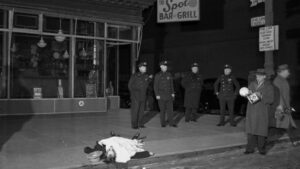
He also stated that they lacked ambition and were willing to settle for little weekly salaries instead of reaching for the stars as he had. He also said they were cowards who were afraid of the police.
Perhaps still angry from this perceived slight, Vincent restarted the war with Dutch Shultz. On July 28, 1931, Coll attempted to kidnap Joey Rao, a major Schultz lieutenant.
The attempt failed and in the ensuing gun battle on a public street, a five-year-old child, Michael Vengalli, was killed and several other children wounded.
The enraged media, shocked by the brutality of the incident, dubbed Coll a “baby killer” and filled the pages of the newspapers every day with negative coverage of him. The media called him the worst criminal in America, and the FBI named him as #1 on its famed ‘Ten Most Wanted List’.
A street shoot out following an attempted kidnapping by Coll’s gang left a five year child dead and Coll himself facing the death penalty.
New York Mayor Jimmy Walker, the son of an Irish immigrant, christened Coll a ‘Mad Dog’ and the nickname made for great headlines, and it stuck to this day.
While on the run, the newly christened ‘Mad Dog Coll’ approached another notorious Irish gangster, Jack ‘Legs’ Diamond, and tried to form an alliance with him.
Perhaps fearing the noose was tightening around him in New York, he proposed a joint venture with Diamond to smuggle beer and whiskey into other states far from New York City.
Coll told Diamond they could make a fortune. however, Diamond was cautious in his dealings with Coll, and he had every reason to be since he knew Coll had once accepted a Mafia contract to assassinate him! (8)
However, before the new partnership could be created, New York State police captured most of the Coll gang, and a few days later Coll himself and Legs Diamond were captured, and Vincent was charged with capital murder of the five-year old boy in New York.
The general consensus was that Coll would be found guilty and sentenced to death. The press speculated that Mad Dog Coll had an urgent appointment with the electric chair.
Mayor Walker, ever conscious of public opinion, was making it clear he wanted a quick trial, a guilty verdict and an execution to quell the massive public anger at Vincent.
However, this was not to be, because Coll was acquitted in a bizarre trial.
Vincent on trial for Murder
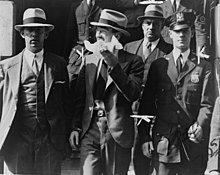
Vincent’s lawyer was the famous defense attorney, Samuel Leibowitz, much used by the gangster fraternity and for good reason.
Leibowitz was the most successful criminal lawyer of his generation and the go-to man whenever a major criminal figure needed a defense attorney. He was a frustrated actor, and the court room became his stage where his oratorical skills and flair for the dramatic made him a formidable opponent for any prosecutor.
Despite his showmanship, the real reason for Leibowitz’s successful track record was his preparation — he left nothing to chance. Throughout the 1920s Leibowitz defended a who’s who of criminal history and usually got them off.
Coll’s lawyer managed to show that the prosecution’s main witness was unrealiable.
During the trial Leibowitz used every trick in his formidable arsenal to select a jury he felt was as sympathetic as possible to Vincent. The turning point in the trial was focused on the key prosecution witness George Brecht. Leibowitz managed to destroy his credibility and that of the prosecution’s, when it was revealed that Brecht made a covert living as a witness at criminal trials.
The trial was now a farce and the court room descended into uproar at this revelation. The prosecution case had collapsed, and the Judge was left with no choice but to allow Coll to walk free in December 1931. (9)
Vincent’s fatal mistake
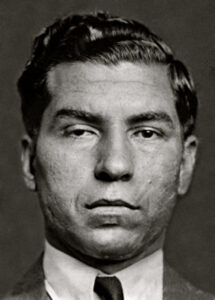
Despite the let-off, Vincent did not learn his lesson. Even while awaiting trial, he embarked on what would be a costly mistake, the attempted murder of Charles ‘Lucky’ Luciano, one of the most powerful gangsters in America.
During the trial Vincent was hired by the New York ‘Godfather,’ Salvatore Maranzano, who despite being the most powerful mobster in the city, feared Luciano would kill him and take over. It seems paranoia was not just restricted to Dutch Schultz.
Despite the risks, Coll readily agreed to murder Luciano for $50,000, the highest amount yet offered for a single mob murder.
On September 10, 1931, Maranzano invited Luciano to a meeting at his office to discuss re-drawing the mob map of New York. The real plan was for Coll to arrive later and kill Luciano during the meeting. (10)
Coll finally sealed his fate when he took on a contract to assassinate top Italian American criminal figure Charles ‘Lucky’ Luciano.
Luciano, who had a wide network of informers, had learned of the plot against him and decided to act first. He sent his own men, who killed Maranzano before Coll turned up. While Luciano knew his life was in danger, he did not know the identity of the man Maranzano hired to kill him.
The fleeing assassins, however, saw Coll arriving and informed Luciano that he must be the intended hitman. This sealed Vincent’s fate.
An enraged Luciano, while flattered at the high level of the bounty on his head, arranged for Coll’s old friend from the Gophers, Owney Madden, now boss of the Irish criminal syndicate in Hell’s Kitchen, to place a similar $50,000 bounty on Vincent Coll’s head. (11)
Two violent hitmen, Leonard Scarnici and Anthony Fabrizzo, accepted Madden’s bounty and the hunt for Coll began.
Vincent was again in hiding but, acting on a tip-off, Scarnici and Fabrizzo burst into a Bronx apartment where they believed Coll was sleeping. They found six people there. Not knowing Vincent Coll by sight, they decided it was better to be safe than sorry and decided to shoot everyone anyway. In the ensuing bloodbath, three people died and three hung to life; but Vincent Coll was not amongst them.
Vincent was delayed elsewhere and arrived at the apartment after the shooting. The carnage was brutal and the shocked New York authorities informed the mob that this bloodshed had to end.
While the authorities often turned a blind eye to many criminal exploits in exchange for a kickback of the profits, the press publicity surrounding Mad Dog Coll and his associates was becoming politically damaging and even worse, bad for profits.
The Murder of Mad Dog Coll
Dutch Shultz and Madden also decided to act; this, after all, was getting bad for business.
A few days later, Coll received word that Madden, whom he trusted from his Gopher days, wanted to speak with him. Coll was informed Madden had worked out a settlement between all the gangs that would make everyone happy and save his life. Vincent had known Madden all his life and trusted him, but this was to prove a fatal mistake.
Coll was set up by former associate Owen Madden and machine gunned to death in Hell’s Kitchen where he had grown up.
A meeting was arranged in Hell’s Kitchen where he would, ostensibly, be safe because the neighbourhood was under Madden’s protection.
To avoid any further mistakes and to ensure Coll would now be recognised by his assassins, Dutch Schultz arranged for an old Coll associate, Abraham ‘Bo’ Weinberg, to work with the hitmen, Scarnici and Fabrizzo. Weinberg and Coll had worked together under Schultz, but Weinberg had stayed loyal to Shultz during the ensuing war between the men.
Vincent was now a desperate man. He was being hunted by every mob hitman in New York, all wanting the $50k bounty Luciano had placed on his head. On February 7th , 1932, Vincent checked into the Cornish Arms Hotel on 23rd Street.
The next day Coll entered the phone booth in the London Chemists drug store at 314 West 23rd Street at Eighth Avenue. He had been told by Owney Madden the previous day to call him to discuss the truce. Madden had set him up and Vincent had walked right into an ambush.
Weinberg identified Coll to the hitmen waiting in a car as Coll walked by and Scarnici and Fabrizzo stepped out to murder Vincent.
Only one assassin, Scarnici, entered the drug store, Fabrizzo and Weinberg waited on the sidewalk. Police reports later detailed that, as Scarnici passed cashier George Scott, who was waiting on a customer, a Dr Leo Katz, he turned to Scott and quietly said, “Keep cool now.” (12)
Scarnici had a submachine gun hidden under his overcoat and as he approached the phone booth, he drew this and fired two bursts into Coll as he talked to Madden.
Taking no chances, Scarnici checked Coll was dead, then calmly replaced the gun under his coat and turned to walk out of the drug store. Passing the two witnesses Scott and Katz, he turned to them and raised a finger to his lips and made a ‘Shhh’ motion. (13)
He left the store and re-joined Weinberg and Fabrizzo and all three sped off into Eighth Avenue traffic. The hit on Vincent Coll had lasted less than 90 seconds.
The Coroner’s report revealed that while a total of 15 bullets were removed from Coll’s body at the morgue, it appeared that many more may have passed through him.
The New York Evening Post reported:
“How many shots were fired is not known. Some witnesses said fifteen others said fifty. As the killer backed out of the store, the door of the booth opened slowly and Coll’s body pitched forward, three bullets in the head, three in the chest, and one in the abdomen and eight and the arms and legs.” (14)
The Aftermath
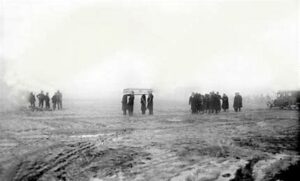
The authorities never definitely identified Vincent ‘Mad Dog’ Coll’s killers. Dutch Schultz’s attorney, Dixie Davis, later claimed that gangster, Bo Weinberg, was the getaway driver of the limousine. Another suspect was one of Coll’s own men, Edward Popke aka Fats McCarthy.
The submachine gun that killed Coll was found a year later in the possession of a Hell’s Kitchen gunman named ‘Tough’ Tommy Protheroe, who used it during a 1933 saloon killing.
On May 16, 1935, Protheroe and his girlfriend Elizabeth Connors were shot and killed by unknown gunmen in Queens. It is possible that this could have been revenge for the death of Vincent Coll. (15)
What we do know is that no one was ever arrested for Vincent Coll’s death.
Dutch Schultz, Coll’s one time mentor and later enemy, sent a wreath to Coll’s funeral bearing a banner with the message, “From the boys.”
Despite a love of glamour, fashion and a deep-rooted need to be respected, Vincent was mourned only by Lottie Coll who, despite taking Vincent’s name, was never officially married to Coll.
They had applied for a marriage license in New York City in January 1932 but Vincent’s death less than a month later ended their marriage hopes. However, the press would always refer to her as the wife of Mad Dog Coll. (16)
Vincent was buried in St Raymond’s cemetery in the Bronx. Dutch Schultz himself sent a wreath to Coll’s funeral bearing a banner with the message, “From the boys.”
So ended the violent and notorious life of Vincent ‘Mad Dog’ Coll at the age of just 23 years.
As is normally the case in mob hits, all three of the men involved in Vincent’s death also met brutal ends.
Fabrizzo was murdered on November 20, 1932, after a botched attempt on the life of another organised crime leader, Bugsy Siegel.
The gunman, Scarnici, was executed in the electric chair in Sing Sing prison for the 1933 murder of a police detective.
Bo Weinberg didn’t receive much gratitude from Dutch Shultz for his part in the demise of Vincent Coll. Shultz arranged for him to disappear after discovering he was in league with Lucky Luciano to have him killed.
Dutch Shultz continued to operate his rackets for only a few more years. On October 23rd , 1935, he was killed at the Palace Chophouse in Newark, New Jersey, on orders from the new National Crime Syndicate headed by none other than Lucky Luciano.
As for Owney Madden, well, he left New York shortly after the death of Vincent Coll knowing the end was in sight for the Irish mob and that the Italian mafia were now in the ascendancy.
John Joe McGinley January 2022
Sources:
- New York Times. October 6, 1931
- New York Times. October 5, 1931
- “Schultz product of dry law era” New York Times. January 22, 1933.
- “Schultz product of dry law era” New York Times. January 22, 1933
- New York Times. September 20, 1939.
- IrishCentral.com 2nd Feb 2020
- IrishCentral.com 2nd Feb 2020
- IrishCentral.com 2nd Feb 2020
- New York Times. January 13, 1932
- The Five Families. MacMillan. May 13, 2014.
- The Five Families. MacMillan. May 13, 2014.
- New York Times. February 8, 1932
- New York Times. February 8, 1932
- New York Times. February 8, 1932
- IrishCentral.com 2nd Feb 2020
- IrishCentral.com 2nd Feb 2020